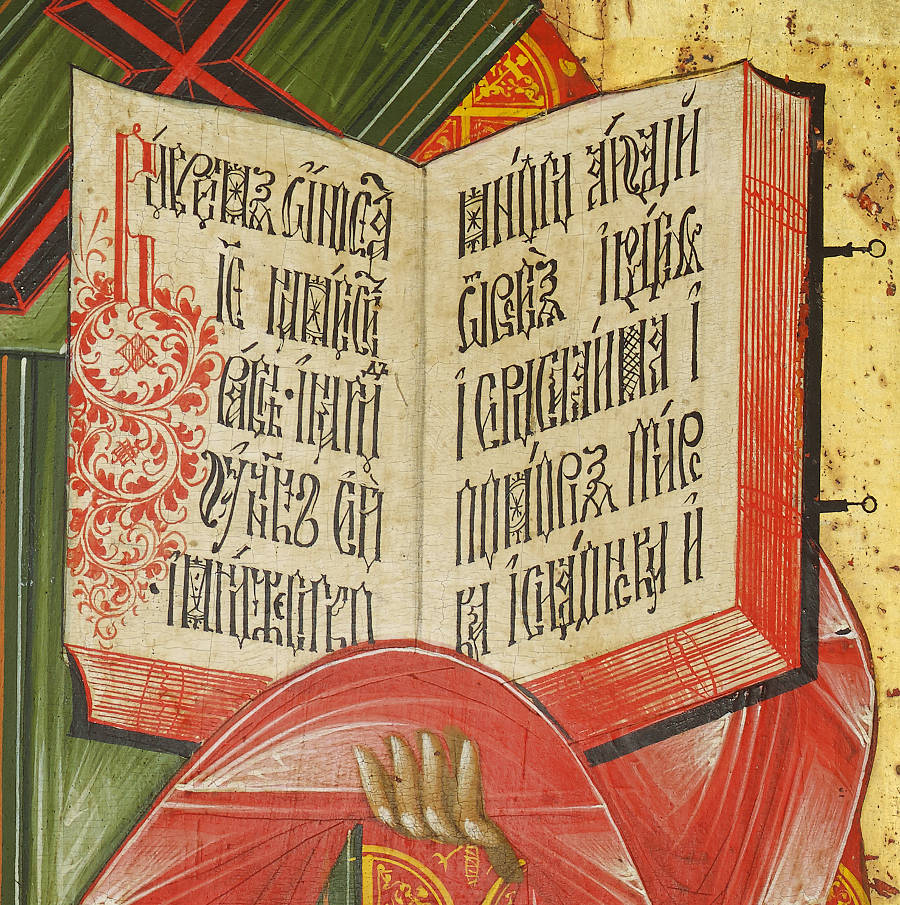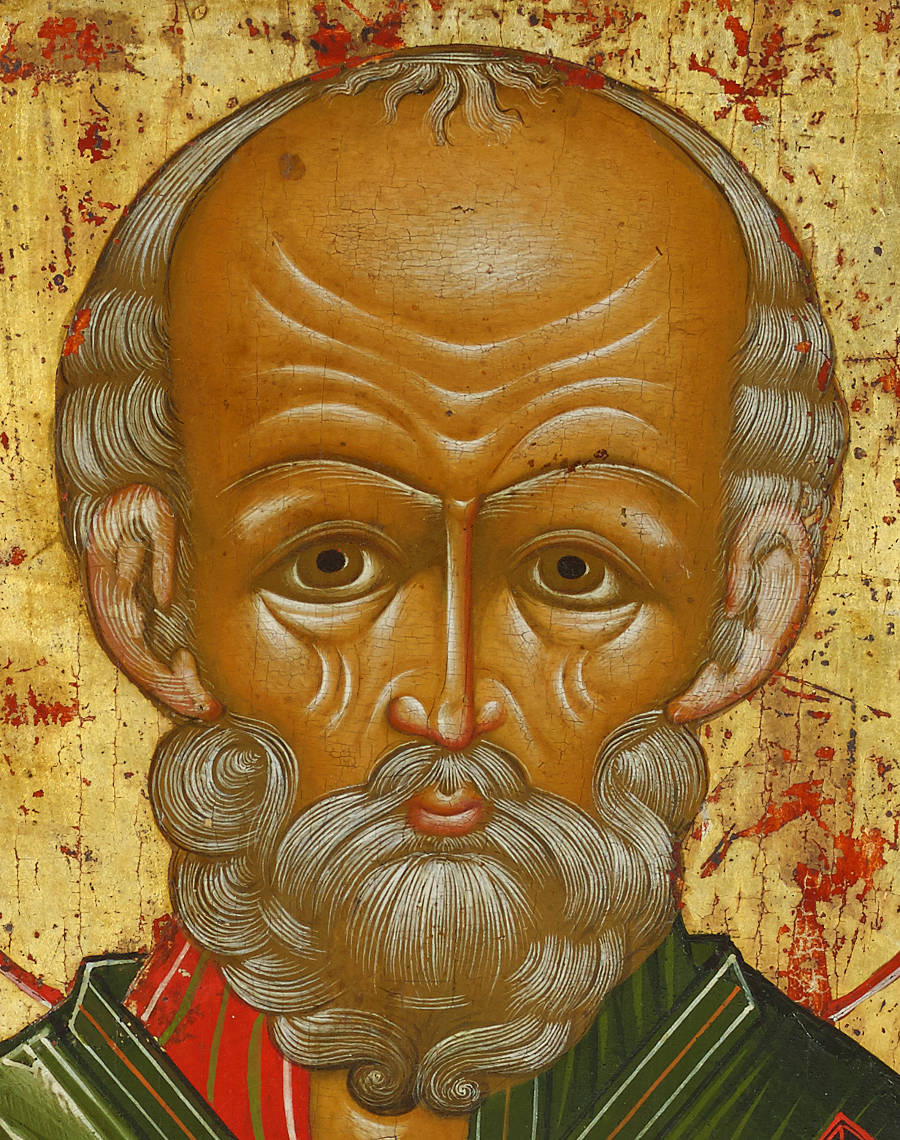 Exhibitions Archive
Exhibitions Archive
 Exhibitions Archive
Exhibitions Archive

AZ06. Saint Nicholas the Wonderworker
Russian, Nevyansk School, 19th century
Panel: 44.9 x 37.4 cm; 2.5cm thickness![hideselects= [On] header =[Convert size] body = [Click here to show the size in inches] Click here to convert metric size to imperial](images/inches.gif)
Inscriptions: In Old Slavonic: ‘Nikolai Chudotvoryets’ Nicholas the Wonderworker; the codex open at Luke 6:17-23
Feast: 19th December (Eastern)


No. 6. Detail with the Sermon on the Plain

No. 6. Detail
St Nicholas, wearing the stole with crosses, is represented as a bishop. He is depicted half-length blessing the onlooker with his right hand and holding the gospels in his left. In miniatures on either side of his head are Christ handing the gospels to him and the Mother of God offering him the stole. St Nicholas is the most widely revered saint in Orthodoxy. The Russians have a saying 'If anything happens to God, we have always got St Nicholas'. The historical Nicholas was a bishop in the 4th century. He was present at the Council of Nicea where he attacked the heretic Arius so violently that fellow bishops tried to restrain him. But that night, in a dream, St Nicholas saw Christ handing him the gospels and the Mother of God holding out to him his bishop's stole [omophorion]. This endorsement of his actions is traditionally rendered, as we see here, in the portrait icons of the saint.
In his hand he holds the gospel, which is magnificently illuminated in the Vyaz’ calligraphy. It contains the passage from Luke 6:17-23 known as the Sermon on the Plain: ‘At that time Jesus stood on the plain and a crowd of his disciples, and a great multitude of people from Judaea and Jerusalem and the sea coast of Tyre …’. The spelling of Jesus as ‘ІСУС’ abbreviated to ‘ІС’, a spelling used by the Old Believers, rather than as ІИСУС as in the mainstream Orthodox Church shows us that this icon originated in a region dominated by Old Believers, as Nevyansk was.1
The work is ascribed to Nevyansk, a town on the Neyva river in the Urals, where a number of Old Believer workshops were established in the second half of the eighteenth century. The icons are notable for bright colours, fine brushwork and remarkably fine calligraphy. A privately funded museum devoted to Nevyansk icons recently opened in Yekaterinburg2.
Fig. 1. Nevyansk Icon in Zurab Tsereteli Art Gallery. Collection Eugene Roizman |
No. 6 |
Our icon shares typical features of the Nevyansk School as we see in an image of Florus and Laurus exhibited at the Zurab Tsereteli Art Gallery in the Russia Academy of Arts and Museum Nevyansk in 2009 (Fig. 1). We note the wide borders edged in blue and red, flat figures silhouetted against tin-leaf ground with tinted varnish to simulate gold, fine brushwork, skillful lettering and carefully gradated bright colours.
No. 6. Back of the panel
Footnotes:-